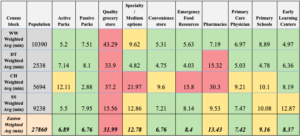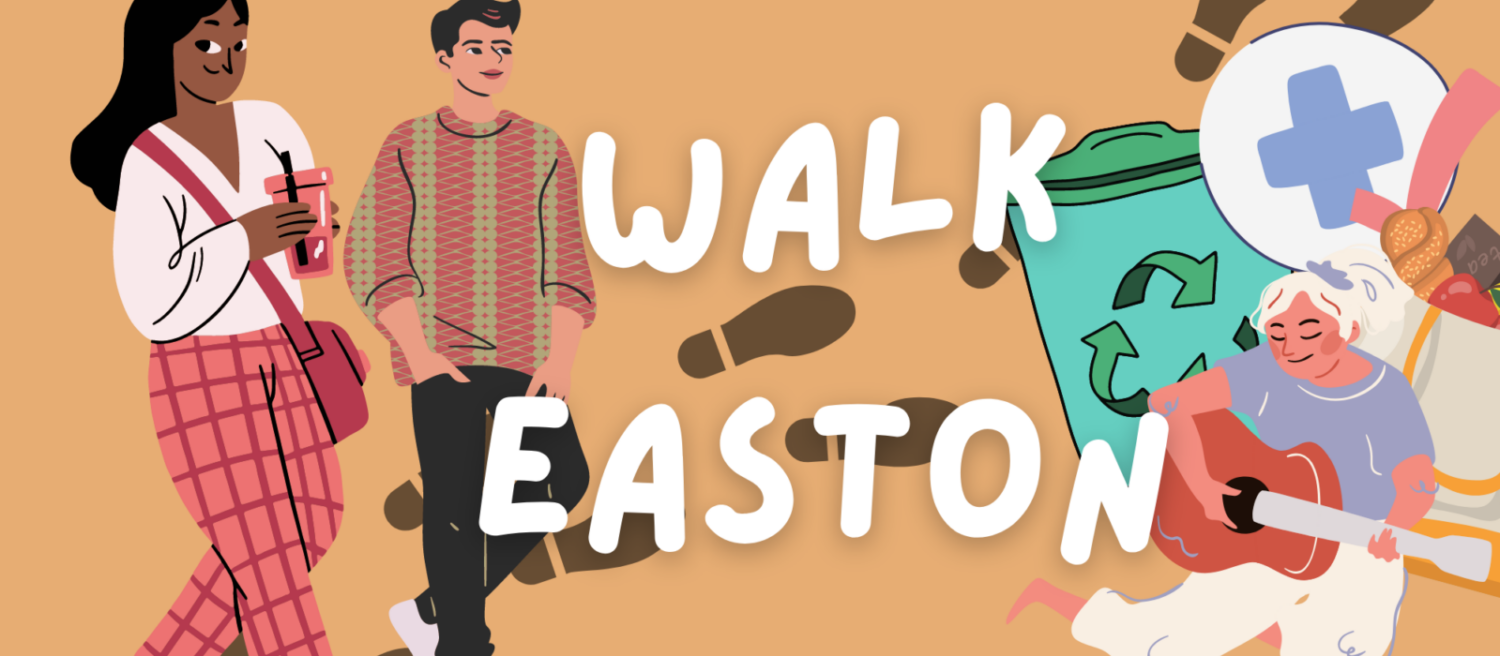Results
On a citywide level, Easton is a fairly walkable city using the simple standard of a 15-minute walk. However, there are key limitations that require attention to improve the quality of life for residents. As noted in Table 1, many amenities have walking times below the 15-minute threshold. Among the four neighborhood weighted walk averages, parks, convenience stores, emergency food, PCPs, and daycares are all under a 9-minute walking time. Amenities that are within a 9-15 minute walking time are specialty food, pharmacies, and primary schools. The only amenity that is unwalkable on a citywide average is grocery stores.
It should be noted that this data does not take into account the quality of the amenity. For example, the West Ward has a large number of parks but many of them are not of adequate quality.

Walking times in minutes to each amenity, weighted by the population of each census block within the neighborhood. We summed the products of population and walking times and then divided them by the total population. We did it for each neighborhood, and then the entire Easton city. The highlighted red sections are all the amenities that are above a 15-minute walking time. Yellow sections are 9-15 minutes and Green sections are 0-9 minutes.
Recommendations
- We recommend that the city of Easton address infrastructural barriers such as street and pedestrian intersections, poor street lighting, and invisible signage that makes it difficult for residents to walk or bike.
- We recommend a Parks Department-led initiative to ensure each active park has the potential for physical activity for local families and children, such as a playground with equipment or the addition of signage and beautification efforts between pocket parks to create a quasi-trail.
- We recommend that the City of Easton funds and supports small-scale neighborhood ambassador programs dedicated to maintaining and extending the beautification of Easton.
- We recommend that urban planning for the 15-min city in Easton revolve beyond the built environment and take equity & justice into consideration. More specifically, the city should assess how infrastructural and systemic changes might directly lead to gentrification. We suggest the city focuses on ways to strengthen the amenities and connections it currently has.
